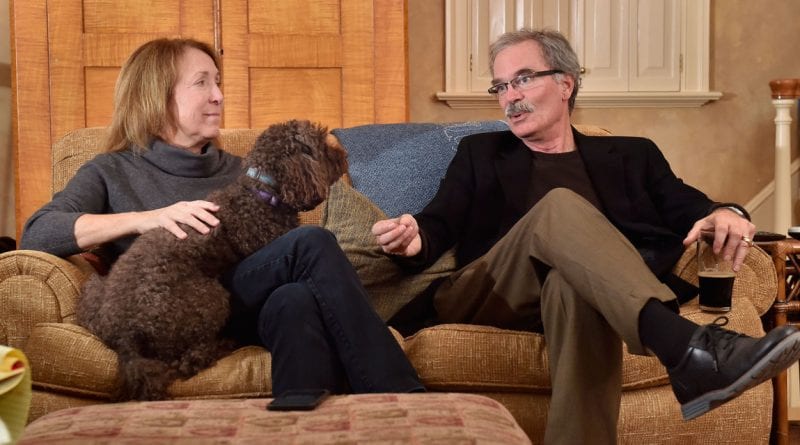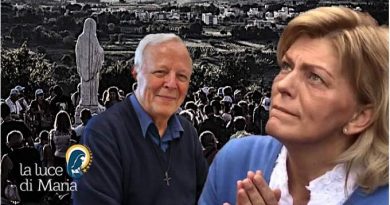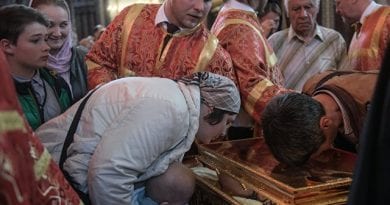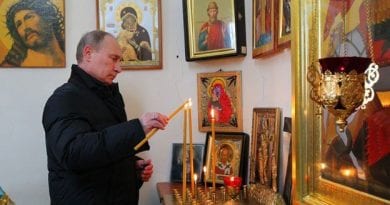Doctor Says Lourdes Water Cured His Deadly Cancer
Originally Published at Lancaster Online
In January 2013, Dr. Bob Springer, then 56, knew something was wrong. He was having a hard time swallowing and was regurgitating food.
His wife, Maggie, a former U.S. Army nurse, knew it was serious when nurses at the oncologist’s office averted their eyes when results from Bob’s endoscopy came back.
This wasn’t acid reflux or a hiatal hernia. The diagnosis was esophogeal cancer, which had spread to Bob’s liver.
“That’s stage 4 and that’s pretty bad,” he said.
According to the American Cancer Society, the 5-year survival rate for people with esophogeal cancer is just 18 percent.
At the time, the Manheim Township couple had planned a trip to see their daughter, Kate, a free-lance journalist in Hong Kong. His doctor suggested they ought to take the trip. It was his way of saying that Springer might not have another chance to do so.
“We said ‘No, we want to start therapy,’ ” Maggie Springer said.
By week’s end, Springer was undergoing intensive chemotherapy. He underwent chemo and radiation therapy and eventually surgery.
Today, his cancer remains in remission and he continues to work as an interventional radiologist at UPMC Pinnacle Lancaster.
If the story ended there, it would make a great Thanksgiving story: Man beats stage 4 cancer. But as inspiring as his story is, it’s only the beginning of what has become a journey of faith and peace.
‘Miracles happen there’
Lourdes, France, is a small market town at the foot of the Pyrenees mountains. On Feb. 11, 1858, 14-year-old Bernadette Soubirous saw an apparition of the Virgin Mary in a cave. The young girl was instructed to dig in the ground. When she did, a spring began to flow. She also was told to have people bathe and drink the water from the spring. Over the ensuing weeks, she saw a number of apparitions of Mary. At the same time, a woman with a dislocated arm is said to have been cured when she bathed in the waters of the spring.

Long before social media, the story went viral. Europeans began coming to Lourdes in droves. A church was built at the site. In the decades since, millions of people have come to Lourdes to bathe in the waters, hoping to cure what ails them. They arrive from the four corners of the Earth. Although many are Catholic, many are not (the Springers are Episcopalian). Some are malades, the French word for a sick person; others are tourists.
Prior to and during his illness, Springer had spoken with Dr. Anthony Mastropietro, chief medical officer at at UPMC Pinnacle Lancaster and UPMC Pinnacle Lititz, who had talked to him about Lourdes.
Mastropietro is a member of the Knights of Malta. The group annually pays the way for 50 malades from the Federal Association — essentially the East Coast of the United States including Texas — to go to Our Lady of Lourdes along with companions and volunteers who are there to support them. Doctors often accompany malades who may need treatment on the trip.
Mastropietro had shown Springer dossiers of people whose health had been restored and for which modern medicine has no answer.
“Tony said, ‘Miracles really happen there,’ ” Springer said.
Speaking by telephone from his Lancaster office, Mastropietro cited several examples of healings, including anatomical regrowths that occurred decades ago and for which there is no medical explanation.
“I read them,” Mastropietro said, “and I was blown away by some of the healings.”
When Springer was diagnosed, Mastropietro asked him if he would like a bottle of water from Lourdes, which he had brought back to Lancaster with him.
Springer said yes. Every day Maggie would place a drop of water on Bob’s forehead — a practice he continues today.
Springer previously had expressed an interest in going to Lourdes. Although his cancer was in remission, he now felt he had a reason to go.

Dr. Bob Springer was a malade at Lourdes, France in 2015. He now serves as a volunteer at Lourdes.
MAGGIE SPRINGER
The Springers flew to Lourdes in May 2015 — he as a malade and she as his companion — along with roughly 350 others — 50 malades, 50 companions and other members of the Knights of Malta and friends who volunteer for the week.
Maggie Springer said the flight to France was quiet as people contemplated their fate.
Upon arriving, they met with team members which included a doctor and a nurse. On the second day, they waited in line before being directed to the grotto. Malades go to the front of the line. Once in the grotto, they were placed in frigid water up to their necks for 30 seconds.
“To me it was very cold,” Bob Springer said. “There are some people who say it’s not cold. Their faith,” he quipped, “must be very strong.”
The church’s view
When it comes to “miracles” the Catholic Church has strict criteria: The illness healed must have been incurable and the healing must be sudden, instantaneous, complete and without any subsequent relapse. Furthermore, the miraculously healed person must not have had any medical treatment or taken any medicine that can be shown to have been effective.
Therefore, while Springer’s cancer remission may be seen as a miracle by family and friends, it is not considered as such by the church.
In fact, the church does not use the word “miracle.” It instead classifies things that are said to be unexplainable as “worthy of belief.”
Nor do the physician panels, made up of an assortment of physicians including atheists, that research “miracles” at Lourdes call them that.
“The doctors say ‘Is it medically explicable or not medically explicable?’ ” Springer said. “And there are documented cases that are just not medically explicable.”
To date, the church has classified just 69 instances as worthy of belief.
“I don’t think any person should go to Lourdes thinking that they’re going to have a miracle,” Springer said.
Finding peace
But even if people are not cured, something miraculous does occur there.
“I didn’t go there expecting to be cured,” he said. “I went there seeking peace, and I found it. Whatever God’s will is, you have to accept it. Lourdes helps you accept it because it’s so easy to feel the presence of God there.”
Added Mastropietro, “I can’t describe it. When you walk through the gates … you can’t help but feel the peace.”
Mastropietro has returned to Lourdes three times as a volunteer.
The Springers also have returned to Lourdes as volunteers and Maggie Springer has since interviewed malade candidates for the Federal Association.
When thinking about that first visit to Lourdes, she points to the difference between the plane ride to France and the return trip home.
On the flight to Lourdes, people were scared, she said. On the flight back, “There was this huge spiritual healing and joy on the airplane. Even if people know they’re probably not going to get cured, there’s just this joyfulness that’s so special.”





